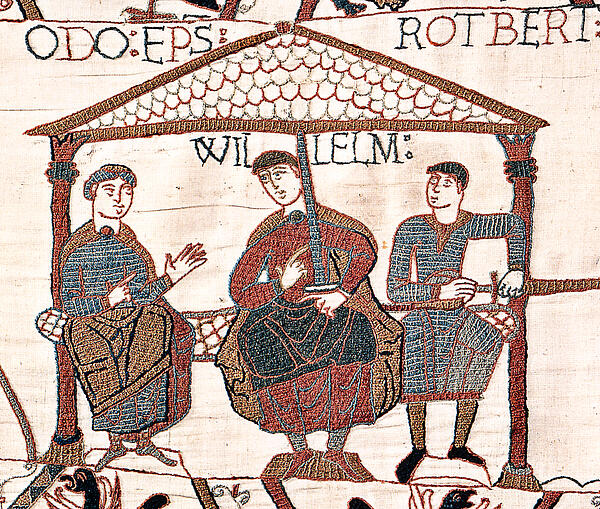William the Conqueror and Consolidation of Power 1066-1087
William the Conqueror is famous for having led the Norman conquest and defeated King Harold in the Battle of Hastings in 1066. But William’s rise to power did not end on the battlefield. Having used nothing but force in a bid to gain the throne, William faced almost two decades of resistance and rebellion from disgruntled English who opposed his reign.
From the moment he came to power on 25th December 1066, William vowed not to pander to the emotions of his new subjects, instead relying on the same forceful tactics that had won him his victory. Over the coming years, he used military force and the introduction of the Feudal System to suppress the English population, simultaneously changing the country’s history.

Crushing rebellions by force
In a rare moment of (arguably selfish) goodwill, William followed his victory in 1066 by allowing some earls such as Edwin of Mercia, Morcar of Northumbria and Waltheof of Northampton to keep both their lands and their titles. However, all those who had fought beside Harold were promptly stripped of both, which were passed to Normal earls and barons who had stood by William during the conquest. This move alone left a legacy of French aristocracy across the England countryside for hundreds of years.
In 1067, once his chosen French nobility had established their positions, William returned to France and relied on them to retain his throne on his behalf. However, Normandy uprisings soon began, where different groups of locals living under the umbrella of a newly titled French nobleman began to rebel against these new powers.
William’s response to these rebellions was, as before, to deal with them by force. In the years following his coronation, William ordered the construction of 78 castles, which were watched over by noblemen and contained soldiers who would suppress those rebelling against the king.
William used forced once more when Edwin and Morcar, who had been kept on as noblemen by the king, led a rebellion against him. Moving in quickly with his army, the king disbanded rebels and quickly established his own castles and noblemen in the areas in question. This approach to ‘winning over’ the English was also used against the church, where he replaced any leaders who opposed him to ensure he could trust his religious advisors.
In 1072, William traveled to Scotland to visit King Malcolm, who agreed to recognise him as king. Having now introduced the Normans across England, Wales and Scotland, he then returned to Normandy and spent most of him time there over the coming 12 years. In his place, he left barons Richard Fitzgilbert and William de Warenne, who ran the country in his absence.
William returned to England in 1086 having heard news that his throne was to be threatened by Danish King Canute IV. However, upon the death of Canute before he even left Denmark, William found himself with a very large army that required feeding and paying.
Feudalism
As a result of his now unneeded army, in 1086 William decided to solve his money woes by making better use of the Feudal System he had already introduced. In one of the most important acts of his reign, William demanded the creation of the Domesday Book, which would create a record of who owned every bit of land in England and how much tax they subsequently owed him.
The book provided a detailed look at what life was like in England during William’s reign, tracking the damage caused by the Battle of Hastings, how much land was owned by each person and what was on the land. This provided him with an efficient means of taking back financial control of the population.
In what would be part of his lasting legacy, William was looking at his country - more than ever before - as a single coherent nation rather than a collection of independent shires. While unsettling much of the population, this move did bring the overall kingdom together, making it easier for William to successfully tax and rule from afar.
By the time he died in 1087, William’s new style of ruling had become the accepted norm. And while his forceful nature at the start of his reign did not continue with his successors, his united system of ruling was set to continue in various forms for many years to come.
See also:
MLA Citation/Reference
"William the Conqueror and Consolidation of Power 1066-1087". HistoryLearning.com. 2024. Web.
